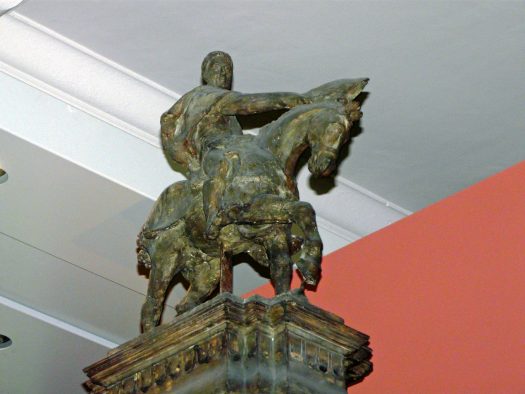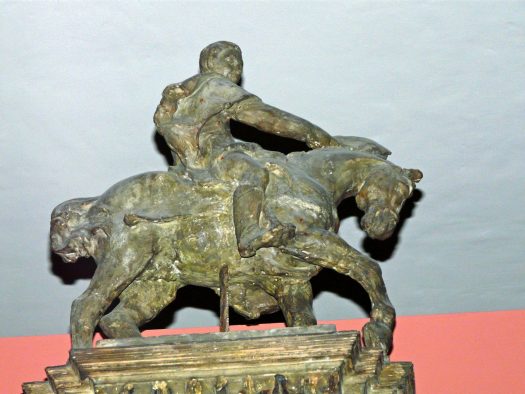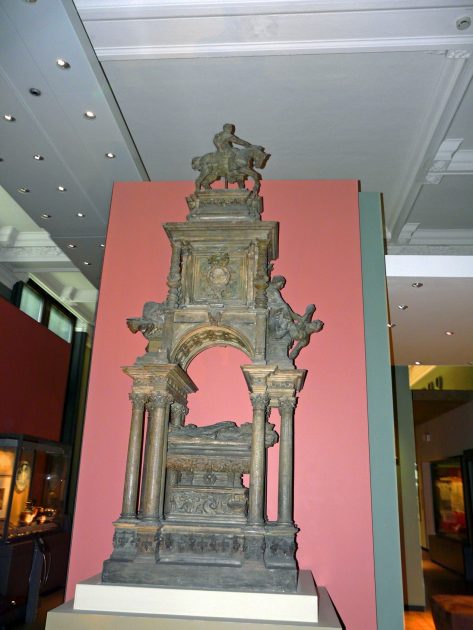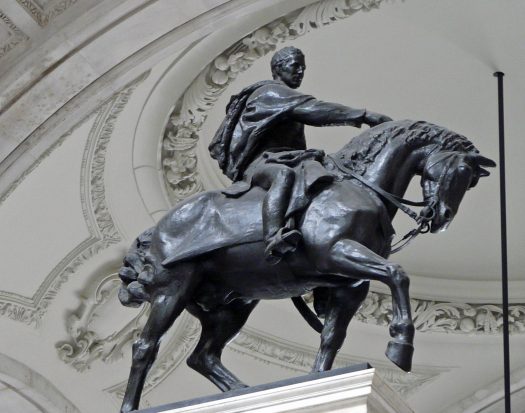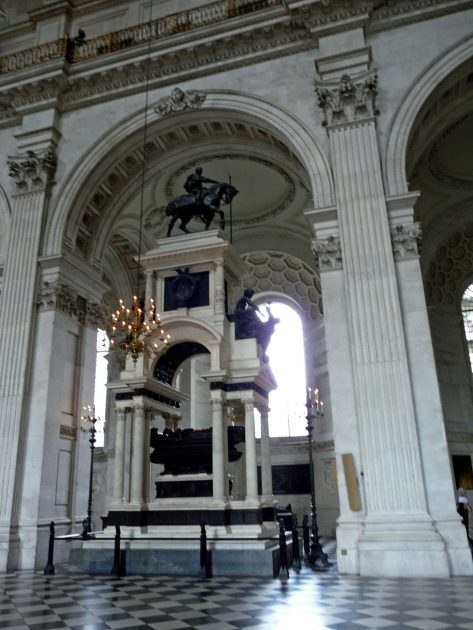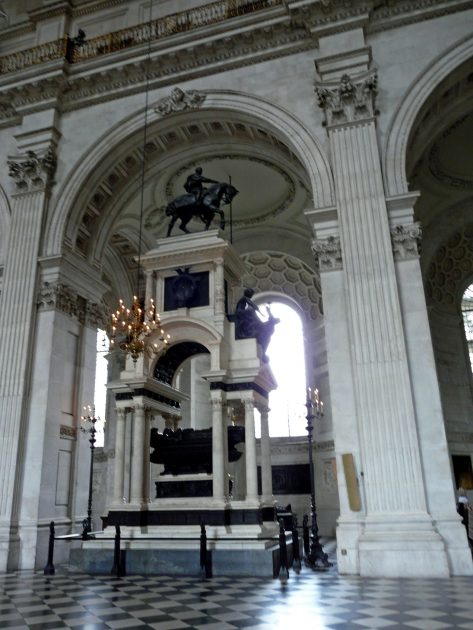In 1856, Stevens took part in the competition for the Wellington monument, originally intended to be set up under one of the great arches of St Paul’s Cathedral, though it was only consigned to that position in 1892. Stevens agreed to carry out the monument for £20,000 – a quite derisory sum, as it turned out. Stevens devoted most of his career to this grand monument, constantly harassed and finally worn out by the interference of government, want of money and other difficulties.
Stevens did not live to see the monument set up. For many years it was placed in a small side chapel, where the effect was utterly destroyed and its magnificent bronze groups hidden from view. Stevens was aware of the position finally decided on for the work, and he suppressed the equestrian group intended for the summit and left the model for the latter feature in a rough state. On the removal of the monument from the chapel to the inter-columnar space on the north side of the nave for which it was originally designed, the model of horse and man was placed in the hands of another sculptor, to be worked upon and cast in bronze. It was still not completed by 1920, after years of work and polemics, and it was feared that it would have a disastrous result on the masterpiece as a whole. The president of the Royal Institute of British Architects declared that the structure would not bear the weight of the addition.
